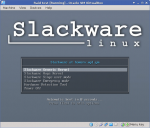It has been quiet the last months here, but there were reasons for that. The most time consuming reason was that I started to brew beer, but there were some other projects too.
The home server project got some big changes. The virtual machines were migrated from VirtualBox to LinuX Containters. This makes the system a whole lot faster, and makes that you can use lighter machines to run this project. The new Raspberry should do fine. Anyway, it took some time before I could document it all, but now it’s ready (I hope).
The firewall configuration is replaced. I used to use firewallbuilder, but that project was abandoned. So I decided to write some scripts that generates the firewall rules using some configuration files. These are available as Slackware package too.
